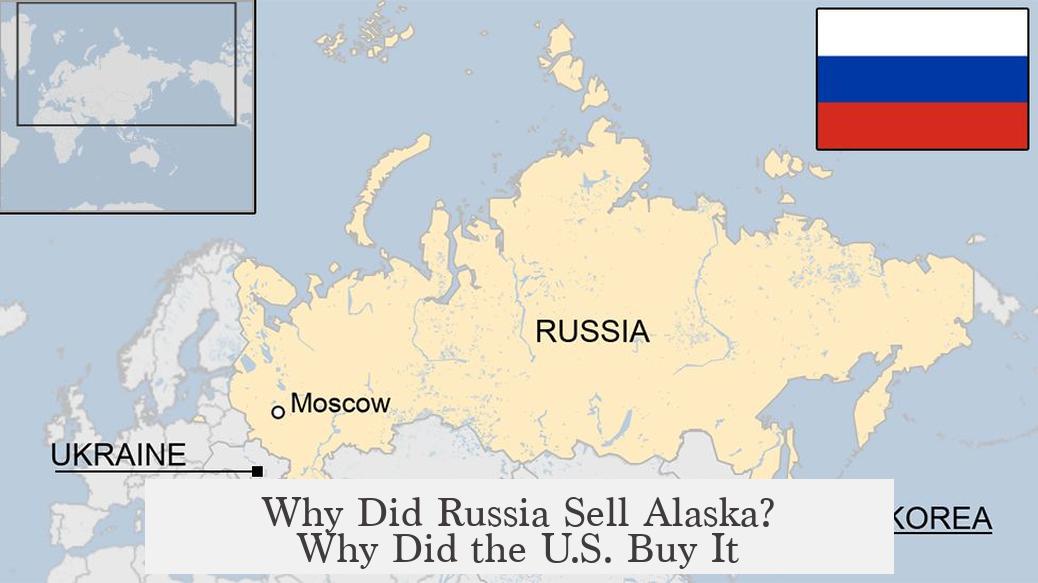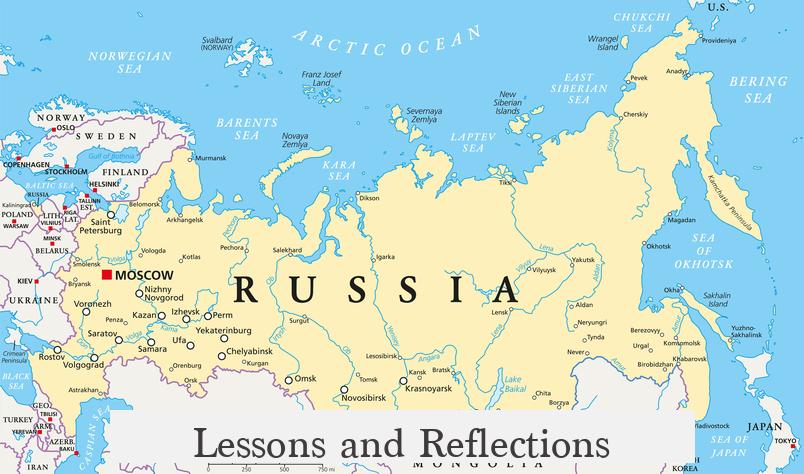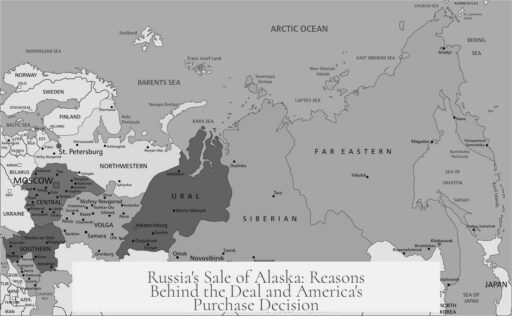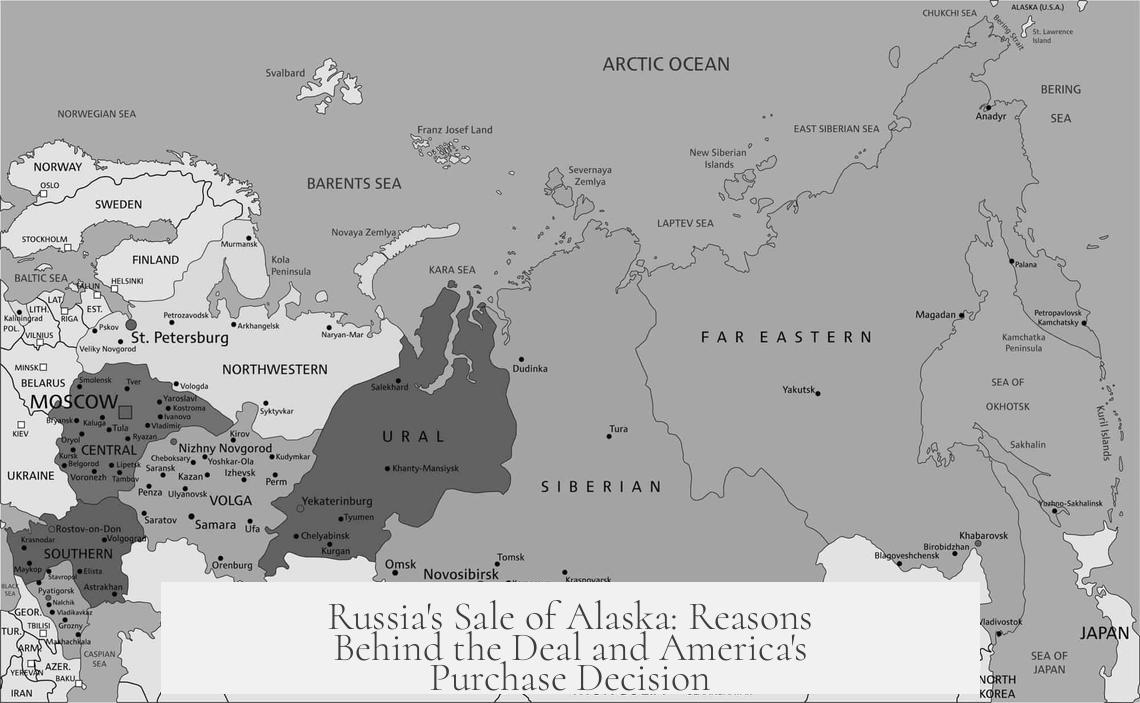Russia sold Alaska primarily because it was economically unprofitable, difficult to defend, and strategically vulnerable, while the U.S. purchased it to prevent British expansion and expand its own territory.
Russia’s decision to sell Alaska in 1867 stemmed from several interrelated factors. First, the Russian-American Company, which managed Alaska, proved economically unviable. The region offered limited profitable resources at that time. While fur trading was somewhat productive, other valuable natural resources like gold and oil remained undiscovered until later. Logistical challenges compounded economic issues. Alaska’s remote location made transport costly and complicated, as goods had to be shipped across the Pacific to reach markets, or transported overland—a long and inefficient route.
Another significant factor was the sparse Russian population. Only about 700 permanent Russian settlers lived in Alaska by the time of sale. Most inhabitants were temporary workers and administrators. This small population hindered economic growth and made establishing a self-sufficient colony difficult. Additionally, native populations greatly outnumbered the Russians, and British Canadian and American fur trappers exploited the area’s resources more effectively. Russia found it challenging to compete with these groups.
Strategically, Alaska was vulnerable. It was isolated from European Russia, far across the Pacific Ocean. Defending the territory in the event of conflict, particularly against a naval power like Great Britain, would have been nearly impossible. Russia recognized that it risked losing Alaska either through British or American encroachment without compensation. Geopolitically, it made more sense to sell the territory and gain funds than to attempt costly defense or lose it without payment over time.
The financial strain caused by the Crimean War (1853–1856) also influenced Russia’s decision. The war was expensive and humiliating for Russia. In its aftermath, the government sought to recover financially by liquidating assets like Alaska. This move provided Russia with much-needed capital. Maintaining or expanding Alaska would have required resources Russia preferred to allocate elsewhere.
The limitation of transportation infrastructure worsened these problems. The Trans-Siberian Railway was not yet built—it only started construction two decades after Alaska’s sale and finished in 1916. Without this railroad, Russia struggled to move fleets, troops, or supplies efficiently to the region. Attempts to support distant territories like Alaska or to engage in conflicts such as the Sino-Japanese War in 1905 demonstrated this logistical challenge clearly. The lack of infrastructure contributed to the perceived impracticality of holding Alaska.
The buyer, the United States, purchased Alaska primarily for strategic reasons. One key motivation was to prevent British expansion northward into the region. By acquiring Alaska, the U.S. ensured that the British Empire, powerful in nearby Canada, could not claim the territory. This fit into the broader context of American territorial expansion during the 19th century. Purchasing Alaska gave the U.S. control over a vast and resource-rich land that could fuel future economic growth and influence in the Pacific Northwest.
This transaction was mutually beneficial. Russia gained financial resources and removed a difficult-to-maintain possession. The United States gained territory and blocked British ambitions. The sale illustrated pragmatic diplomacy motivated by economic realities and geopolitical strategy.
| Reasons for Russia Selling Alaska | Reasons for U.S. Buying Alaska |
|---|---|
| Russian-American Company financially unprofitable | Prevent British territorial expansion |
| Low Russian population and limited settlement | Expand American influence and territory |
| Isolated and strategically indefensible | Acquire future economic resources |
| Strained finances after Crimean War | Control over Northern Pacific region |
| Transport and logistical difficulties | Strengthen geopolitical standing against Britain |
After the sale, Russian settlers in Alaska faced uncertainty. Some became American citizens, but the transition was complex and varied. The sale marked an end to Russia’s colonial ambitions in North America but set the stage for American expansion into a vast new frontier.
- Russia sold Alaska due to economic unprofitability, defensive vulnerabilities, and post-war financial needs.
- Logistical barriers and low population made the colony hard to sustain.
- The U.S. bought Alaska to block British expansion and increase its own territory.
- The transaction reflected strategic and practical geopolitical considerations.
- The deal influenced later development and settlement of Alaska under American governance.
Why Did Russia Sell Alaska? Why Did the U.S. Buy It?

Russia sold Alaska mainly because it was expensive, hard to defend, and simply not worth the trouble. The U.S. bought it to keep it out of British hands and to expand its own territory. That’s the quick answer, but hang on—there’s more to this intriguing tale of empires, money woes, and far-flung wilderness.
Let’s travel back to the mid-19th century when Alaska was Russia’s remote, chilly outpost, isolated from the heart of the empire. The story of Alaska’s sale blends economics, strategy, and a bit of geopolitical chess.
Russia’s Alaskan Woes: Why Selling Made Sense
First, Alaska wasn’t making Russia rich. The Russian-American Company, which controlled the colony, struggled financially. Managing a colony thousands of miles from home, across the vast Pacific Ocean, was like trying to hold a sandcastle against a rising tide. Shipping goods, supplies, and fur pelts was slow, pricey, and by the time the Trans-Siberian Railway was built decades later, it was almost too late.
Yes, Alaska was rich in fur. But beyond that, gold and oil hadn’t been discovered yet. So the colony’s economic potential seemed limited.
| Problem | Impact on Russia |
|---|---|
| Economic unprofitability | Russian Alaska Company stopped commercial operations before the sale. Fur trade only viable industry. |
| Low population | At its peak, fewer than 700 Russian settlers lived there—mostly temporary workers and officials. |
| Defensibility and geopolitics | Alaska was indefensible against British or American maritime forces. Russia feared losing it by force or neglect. |
| Financial strain post-Crimean War | Crimean War left Russia strapped for cash and looking to sell assets to fund recovery. |
| Logistic and competition issues | Freight had to cross Pacific to reach markets; British Canadian and American fur trappers were more efficient. |
The local population was tiny and fragile. Fewer than 700 permanent settlers lived there, mostly Russian officials and workers. The native communities greatly outnumbered them. This demographic imbalance made control difficult.
Then there’s the strategic headache. Russia realized it couldn’t defend Alaska if war came knocking—especially from the British Empire, whose Canadian colonies neighbored Alaska. With a weak navy and no quick troop movements (remember, no Trans-Siberian Railway yet!), Alaska was a vulnerable, costly liability.
The financial pressures came on the heels of the Crimean War, a brutal conflict that drained Russian gold and pride. Selling Alaska for a quick influx of cash made pragmatic sense. Instead of risking losing it for free—or through conflict—it was better to pocket the money.
Domestic turmoil also distracted Russian leadership. The empire was juggling wars, unrest, and social changes like serf uprisings and the arrival of a free press. Investing in a distant, cold colony wasn’t exactly the top priority.
Finally, logistics limited Russian control. All supplies had to cross the Pacific, making operations costly and slow. The colony wasn’t self-sufficient; Russians even had to ask the King of Hawaii for help at times. Meanwhile, American and British fur trappers were exploiting the resources more efficiently and encroaching on Russian territory, raising the specter of de facto loss.
Why Did the United States Say “Yes” to Alaska?
Across the Pacific, the U.S. was watching. Alaska was a tempting acquisition for good reasons. Preventing British expansion was chief among them. The British Empire, which controlled Canada at the time, posed a strategic threat on America’s northern border. Buying Alaska kept the territory from slipping into British hands.
- It expanded American territory significantly, opening doors for future resource exploitation once gold and oil were discovered decades later.
- The purchase aligned with America’s growing ambition and spirit of Manifest Destiny, spreading the nation’s reach to the Pacific Northwest and beyond.
Critics called the deal “Seward’s Folly” or “Seward’s Icebox,” named after Secretary of State William H. Seward, who negotiated the purchase in 1867. At the time, many Americans saw Alaska as barren wasteland, but Seward saw opportunity—both strategic and economic.
What Happened to the Russian Settlers?
So if you were Russian living in Alaska when it changed hands, what next? Well, your citizenship status might leave you scratching your head. Some became American citizens automatically. Others faced a slow transition where identity blurred. Notably, many Russians stayed and adapted to American rule, while some returned to Russia.
Life went on as Alaska slowly integrated into the U.S., but for pioneers, native peoples, and former colonists alike, the sale marked a turning point that reshaped the region’s fate.
Lessons and Reflections

Looking back, Russia’s sale of Alaska makes sense beyond the clichéd “frozen wasteland” narrative. Challenged by geography, economics, defense, and politics, the empire made a pragmatic — if reluctant — choice.
For the U.S., the acquisition planted seeds for future prosperity. Gold rushes, oil discoveries, and strategic location turned Alaska into a valuable jewel. This purchase teaches us to see beyond first impressions—what seems like folly in the short term can become foresight with historical perspective.
“An empire that could not protect nor profit from its land chose to let it go — and a nation eager to grow snatched the opportunity.”
Would Russia Have Fared Better Keeping Alaska?
Speculation is fun but messy. Without the Trans-Siberian Railway, Russian naval weakness, and growing American/British expansionism, holding Alaska might have meant constant conflict or eventual loss without compensation.
Similarly, for the U.S., not buying Alaska could have allowed Britain to control the resource-rich territory, tightening its grip on North America and possibly changing regional dynamics forever.
Final Thoughts: Alaska — A Win-Win in the Long Run
Russia got a much needed cash injection and avoided a costly war or territorial dispute. The U.S. gained vast new territory with tremendous potential. So, the Alaska Purchase wasn’t just a real estate deal—it was a strategic, economic, and diplomatic triumph born of necessity and opportunity.
Next time someone jokes about “Seward’s Folly,” remember: empires make tough calls. And history often rewards patience and vision more than instant gratification.
Why did Russia find Alaska economically unprofitable?
The Russian-American Company was not profitable due to Alaska’s isolation. Few natural resources were discovered yet, and trade beyond furs was limited. The Russian Alaska Company stopped commercial activities before the sale.
What strategic concerns made Russia sell Alaska?
Alaska was far from Russia and hard to defend against powers like Britain. Russia feared losing Alaska to British or American settlers without a formal transfer. Selling prevented a risky conflict or de facto loss.
How did Russia’s financial situation after the Crimean War influence the sale?
The war cost Russia heavily, straining its finances. Moscow needed money to recover. Selling Alaska brought in gold and eased economic pressure from their recent defeat.
Why did the United States want to buy Alaska?
The U.S. wanted to stop British expansion in North America. Buying Alaska increased American territory and influence at a strategic moment. It also gained valuable land without war.
What logistical challenges affected Russia’s control of Alaska?
Transporting goods and troops was hard because everything crossed the Pacific. The Trans-Siberian Railway did not exist then. Russia relied on foreign help and faced competition from better-supplied Americans and Canadians.




